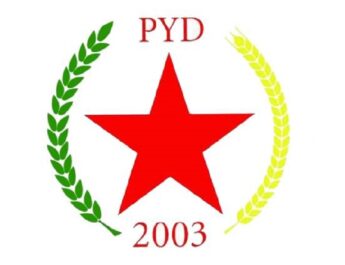NATO is typically described as a defensive treaty organization of countries that have a mutual assistance pact to come to each other’s aid with military force if any member is attacked.
But NATO is hardly a “defensive organization.”
Indeed, from its founding NATO has been an aggressive alliance designed to hem in the then Soviet Union, and to to threaten it with destruction by US nuclear weapons which were and still are stored in member countries, sometimes actually mounted on missiles and available for rapid loading onto US and NATO bombers parked on air bases all over Europe. That hemming-in process today, following decades of further expansion of NATO following the Soviet Union’s collapse, includes adding members located right up on the Russian border in countries like Poland, Estonia and Latvia (where US rockets and nuclear-capable planes are minutes away from critical Russian targets like army and air bases, as well as major navy ports.
NATO was founded in early April 1949 when the Soviet Union didn’t even have a single nuclear weapon and was not expected by US scientists and security people to get one for another 5-10 years. Yet the organization was also founded at a time that the US, which was working round the clock to industrialize production of its new, initially hand-made atomic bombs, had already assembled and stockpiled over 200 of these city-destroying weapons. That is a pretty awesome arsenal for a country that at that time had no rival in destructive capability.
Add to that reality the fact that the US was also already well on the way to producing a vastly more powerful hydrogen bomb (a project that Los Alamos scientists began almost immediately working on right after the August 1945 surrender of Japan). Significantly, in the late 1940s the Pentagon, on President Truman’s orders, had re-activated the assembly-line for producing B-29 bombers — the only plane at the time able to deliver its atomic weapons — while also developing more powerful heavy bombers like the B-36 and B-52. Why the rush? Because there were plans to launch a preemptive nuclear blitz on the Soviet Union. These plans, updated as the US arsenal of atom bombs expanded towards the 300-400 number that Pentagon strategists advised Truman would be needed to destroy the USSR as an industrial society. The succession of operational plans for that attack had such cringe-inducing names as Operation Sizzler, Scorch, Broiler, and Dropshot. (The only reason such a genocidal first-strike on the Soviet Union never happened in the early ’50s when the US stockpile finally reached that attack goal of over 300 bombs, was that on Aug. 29, 1949, the USSR successfully exploded its first atom bomb, shocking the US war department and leading to cancellation of any Washington plans for an early attack.)
Three years later, on Nov. 1, 1952, the US successfully exploded its first thermonuclear bomb, a weapon a thousand times more powerful than the atom bomb dropped on Nagasaki.NATO’s creation has to be viewed in the historical context of America’s astonishing power at that time. Knowing it had the only atom bombs in the world, making it unopposable, the treaty with western European nations was clearly set up to allow the US to keep troops in Europe indefinitely and more important, to stockpile and prepare to launch nuclear weapons against the Soviet Union from locations a short distance from the Soviet capital and industrial heartland
Any American political figure who claims NATO is or ever was a “defensive” alliance and: “not an offensive threat” to Russia is either ignorant or a liar.
Dave Lindorff, CounterPunch
- NATO is Not a Defensive Alliance by Dave Lindorff – counterpunch.org, 17 March 2022


